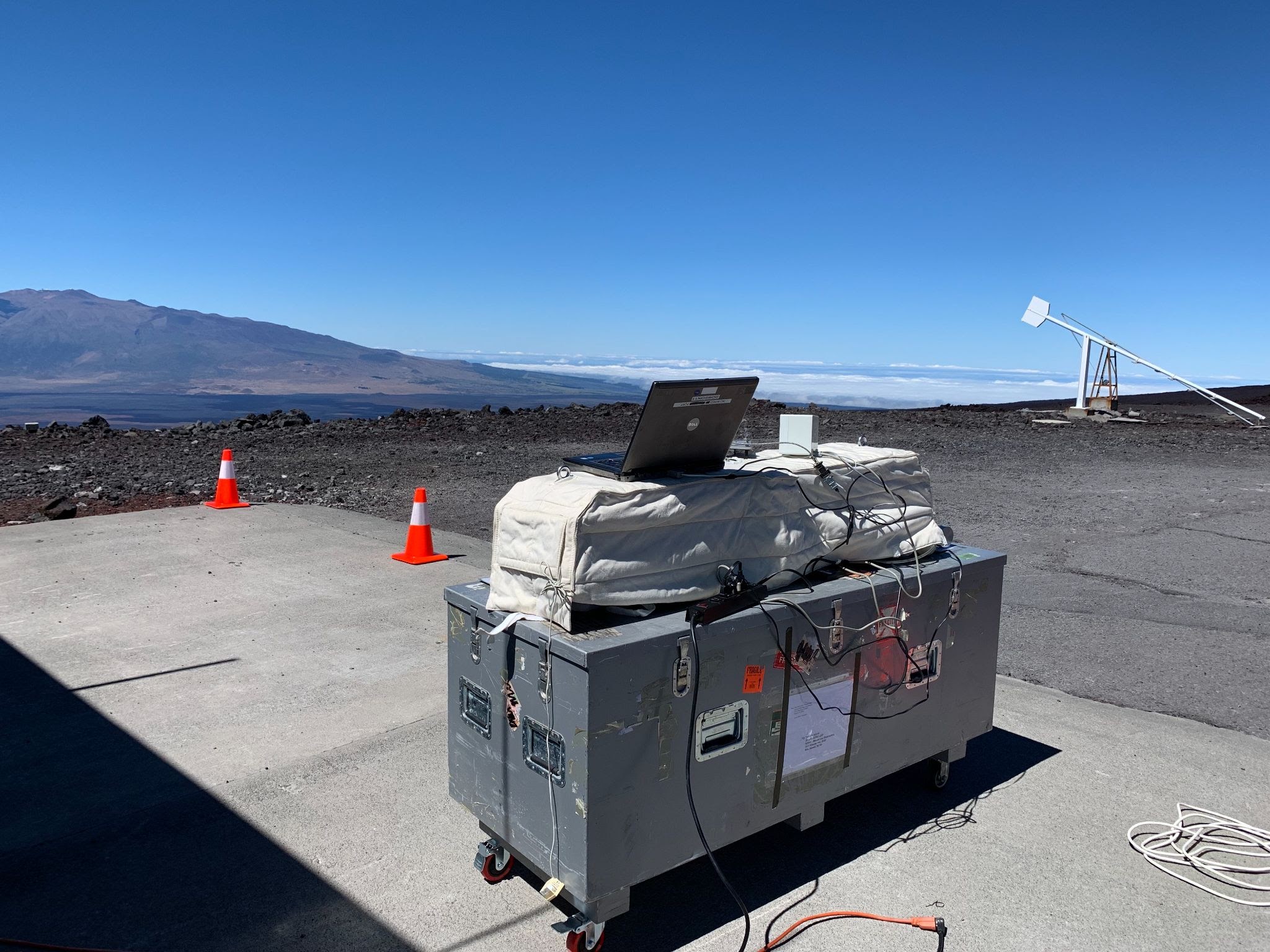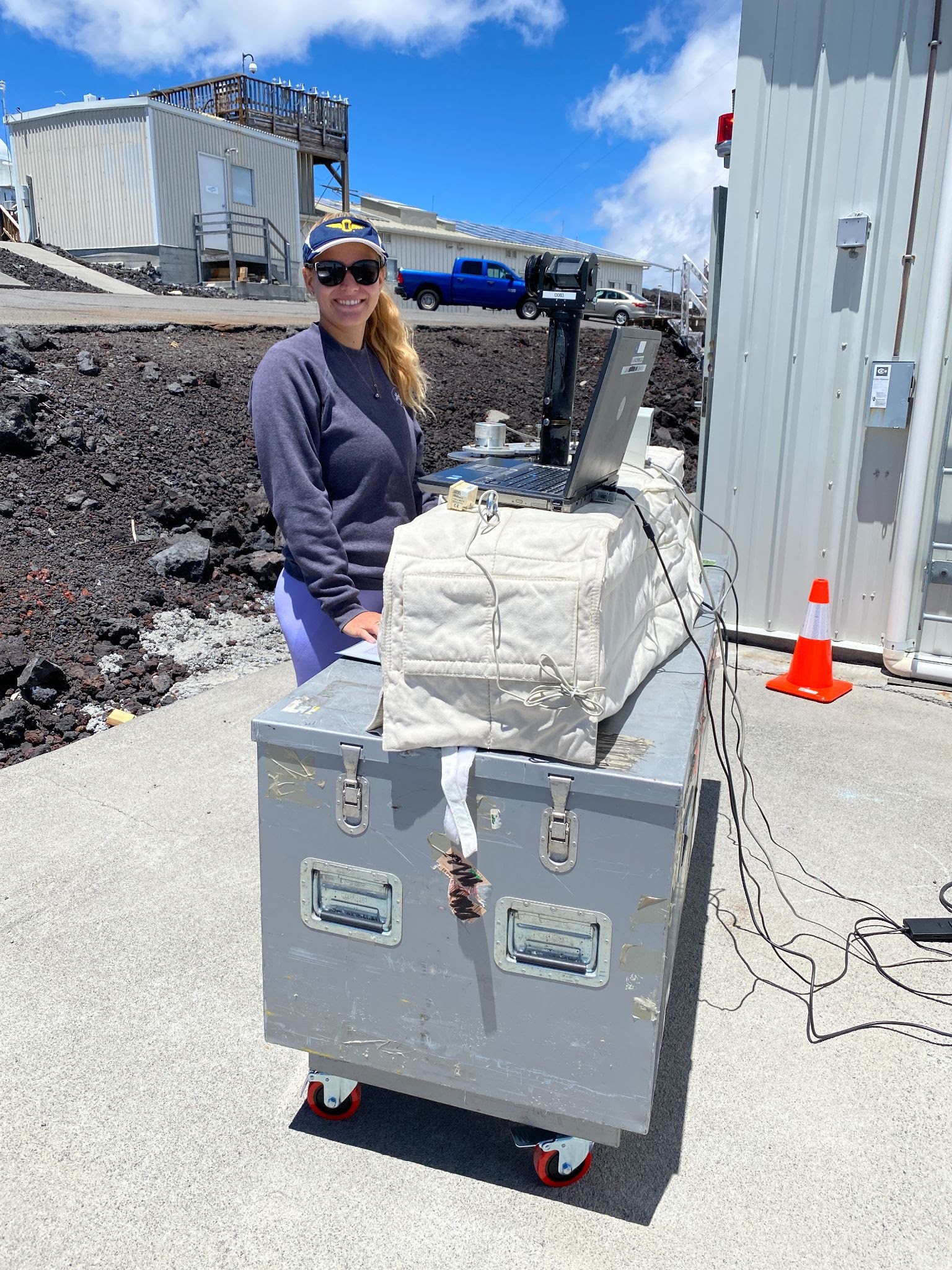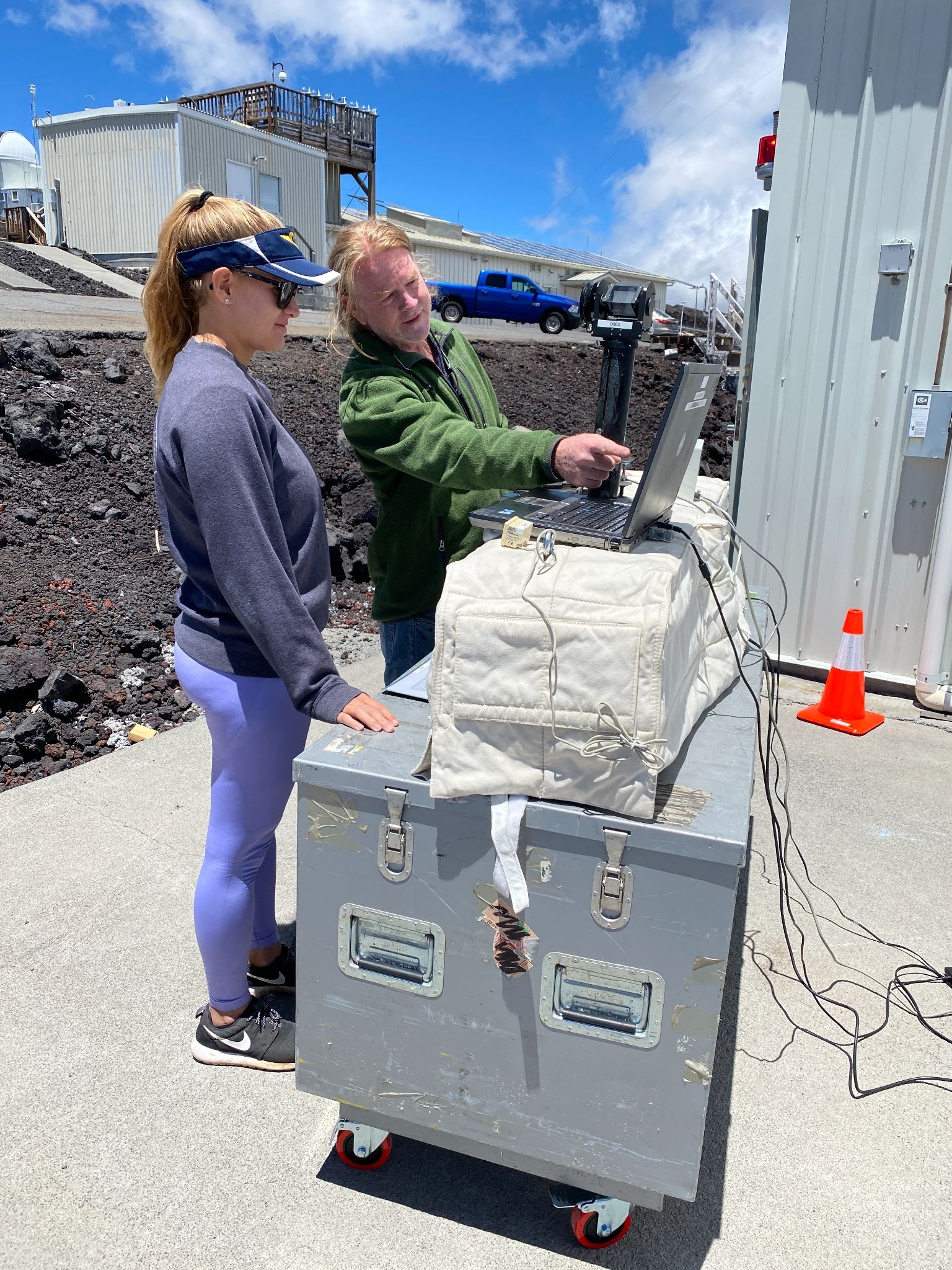Keeping up the standard: Calibrating for accurate ozone monitoring

GML scientist Glen McConville and Lapenta intern Leah Barkai started the calibration of Dobson World standard instrument D083 at the GML Mauna Loa Observatory on July 12, 2021, and will continue the calibration until the end of August.
The Dobson Ozone Spectrophotometer measures total column ozone by comparing the intensities of two wavelengths of solar ultraviolet light. The shorter wavelength is more attenuated by ozone than the longer wavelength, so a larger difference in their intensities indicates the presence of more ozone.
In a process known as the Langley Technique, the Dobson instrument compares the intensity of the two wavelengths at different path lengths through the ozone layer. This allows us to calculate their relative intensity outside the atmosphere, the role of which is similar to that of a starting point of a ruler. This value is called the Extra-Terrestrial Constant (ETC) or so-called calibration constant.

Hosting the WMO/GAW World Dobson Calibration Center, GML is the custodian of the Dobson World standard instrument D083. Every two years, measurements were made at the Mauna Loa Observatory to derive the calibration constant.
The unique location of Mauna Loa Observatory is prime for the calibration of D083. Stratospheric ozone tends to be more stable in the tropics, and its high elevation is above the surface boundary layer, which reduces the presence of aerosols and pollutants that scatter light. This allows for more accurate measurements.
The collection of data for deriving new calibration constant is extended over a 2 months period during which only days with stable ozone and clear sky are selected for final analyses. If a new constant is warranted, all regional standards are updated by intercomparisons with D083, and the regional centers propagate the new calibration to the station instrument in a similar manner.

The Dobson instrument performance is very stable. It has been shown that the observations typically do not drift significantly (if at all) over a 5 year time period. The stability of the station instrument between intercomparisons is verified by monthly standard lamp tests.
Frequent calibrations of the World Dobson standard (D083) ensure the accuracy of global measurements of total column ozone by the WMO GAW Dobson network and verifies the long-term stability of the NOAA and NASA satellite-based climate ozone records.
Read more about the highlights of GML’s 2021 activities at the World Dobson Calibration Center.
